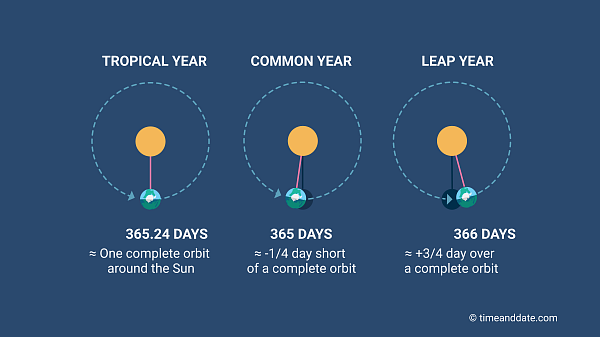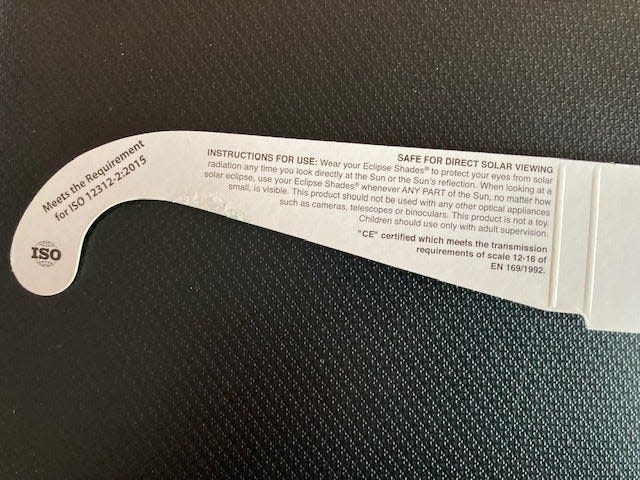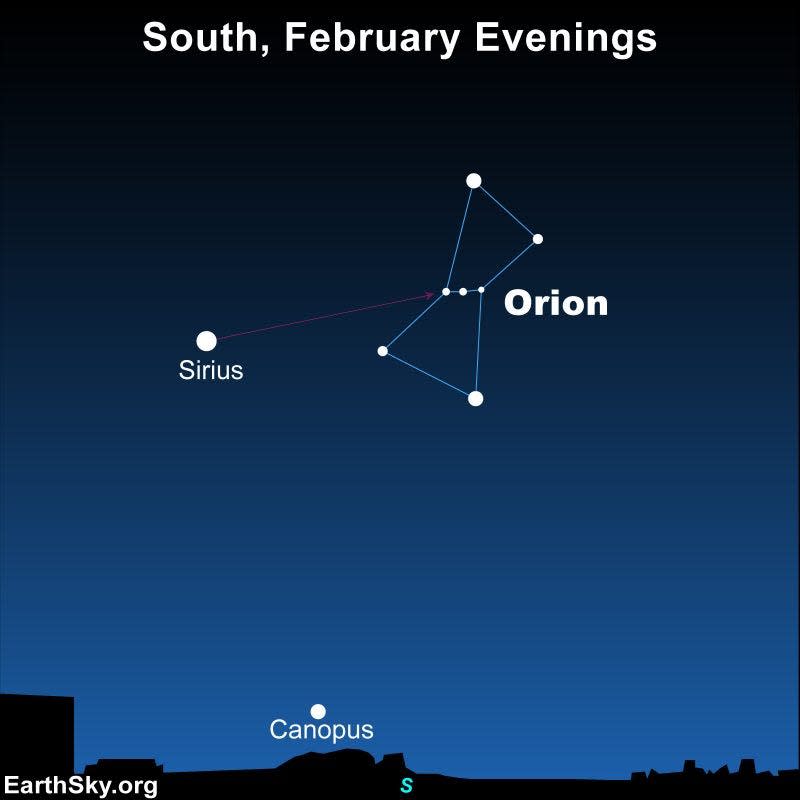Sky Shorts: Here's why we celebrate Leap Day every four years

If you are a “leapling,” or a person born on leap day, 2024 is an exciting year for you! It is a leap year, so you will celebrate your birthday on the actual day, Feb. 29.
Why are there leap years? The explanation involves math, science and history.
It takes Earth one year to orbit the Sun. The actual year is 365.25 days not 365. Eventually, this time differential causes a shift in the seasons.
Let’s travel back through history to 45 BCE. At that time, Julius Caesar consulted with an Alexandrian astronomer named Sosigenes and introduced the Julian calendar. The Julian calendar replaced the Roman calendar, which was complex and based on moon phases. The Julian calendar was based on the actual revolution time of the Earth around the Sun, which is called a tropical year.
The actual revolution time in a tropical year is 365 days, 5 hours, 48 minutes and 46 seconds. At that time, they added another day – leap day – every four years to compensate for the seasonal shift. However, the tropical year still was off by 11 minutes. So gradually, the Julian Calendar shifted off of the seasons.
In 1582, the Gregorian calendar was introduced by Pope Gregory XIII. The Gregorian calendar remains the most widely used calendar in the world today. The Gregorian calendar is also called the Western or Christian calendar. To sync the astronomical year with the seasonal year, the Gregorian calendar skips three leap days every 400 years. When calculating leap years, the formula is: the year must be divisible by four, if the year is evenly divided by 100, then it is not a leap year unless the year is also evenly divisible by 400. So, for example, the year 2000 was a leap year but the year 1900 was not. The year 2000 was a special leap year. It was the first time the third part of the formula was used since the Gregorian calendar began in 1582.
Even the Gregorian calendar is not perfect! Every 3,300 years the astronomical year and calendar year drift off by one day. So, leap day should be a very special celebration for leaplings!

Night Sky for February
Two months until the total solar eclipse! Stop by the Gift Shop at the William McKinley Presidential Library & Museum for your safe, certified, solar glasses. Four per family per visit, $1.25 per pair. When purchasing solar filter glasses look for the international standard requirement code of ISO 12312-2.
Planets and the Moon
Jupiter is stunning in the southern sky and continues to be the evening celestial highlight. On Feb. 1, it shines at magnitude -2.3 and at -2.2 by month’s end. Using binoculars, be as steady as possible, looking for the pinpoints of light around Jupiter, which are the Galilean moons. Telescope views are phenomenal around twilight. The Moon pairs with Jupiter on Feb. 15.
Saturn will depart from the evening sky by the second week of February. At the start of the month, you might be able to see Saturn low in the west 45 minutes after sunset. The best night to catch Saturn might be Feb. 10, when the young crescent Moon is two degrees south of Saturn. Binoculars will help.
Neptune is located in Pisces just south of the Circlet asterism at magnitude 7.8. Look for it by 7:30 p.m. using binoculars or a telescope.
Uranus is to the left of Jupiter in the constellation Aries. At the end of the month Jupiter and Uranus come within eight degrees, but Uranus dims to 5.8 magnitude. It is south of the first quarter moon on Feb. 15. Binoculars or a telescope are needed.
In the early predawn sky, Mercury, Mars and Venus are spread out over 13 degrees on the ecliptic. Mars and Mercury are four degrees apart. You will need a clear view of the eastern horizon to spot Mercury and Mars. Mercury stands only three degrees high in the southeast 30 minutes before sunrise. You may be able to spot Mars, which is 1.3 magnitude, to the lower left of brilliant Venus, 45 minutes before sunrise. Mercury departs the predawn sky in the first few days of February. During the month Venus sinks lower in the sky and Mars climbs higher. On Feb. 22, Venus and Mars meet in the southeastern sky, less than a degree apart, 45 minutes before sunrise.
We celebrate Groundhog Day on Feb. 2, which is also a cross-quarter day, meaning we are halfway through winter.

Night sky spotlight
Last month we highlighted the most magnificent picture in the night sky, Orion, the Hunter. Orion takes along his best friend, Sirius the Dog Star, on his journey through the winter and early spring skies. If you draw a line down from the three stars in Orion’s belt, you can’t miss Sirius! Sirius is a massive white dwarf and is the brightest star in the northern and southern hemispheres night sky. Sirius is a part of the constellation Canis Major, or the Greater Dog. Sirius is also known as the Dog Star. The visual magnitude of Sirius is -1.44. Magnitude represents the brightness of stars. The lower the number the brighter the star. The only objects brighter than Sirius in the night sky are the Moon, Venus, Jupiter and Mars when it is closer to Earth in its orbit. It is one of the closest stars to us at 8.6 light years away. Sirius is a main sequence star like our Sun but much hotter. It is classified as a “A” type star. In Greek, Sirius means glowing or scorching. Sirius is often called the rainbow star because it flickers with many colors, especially when it is lower in the sky. That is when it is fun to view through binoculars. Sirius is visible in the night sky from mid-December through mid-April. Sirius is a binary star, and its companion is a faint white dwarf called Sirius B, known as the Pup Star.
If you are familiar with the term “dog days of summer,” it refers to the period from July 3 to Aug. 11, when Sirius rises along with the Sun. People long ago would say the combination of the heat from Sirius and the Sun gave us the warmest days of the year. In Ancient Egypt, when Sirius rose right before the Sun, the Nile River would flood. Once the flood waters receded fertile soil was left behind and the planting season would begin.
Now is the time to view this beautiful star!
For further night sky details, maps and audio, visit my website www.starrytrails.com.
Visit the Hoover Price Planetarium – Visit www.mckinleymuseum.org, for show dates and times! Planetarium shows are free with Museum admission. The Planetarium is located inside the McKinley Presidential Library & Museum, 800 McKinley Monument Drive, N.W., in Canton, Ohio. For more information, please call the Museum at 330-455-7043.

This article originally appeared on The Alliance Review: Sky Shorts: Here's why we celebrate Leap Day every four years

